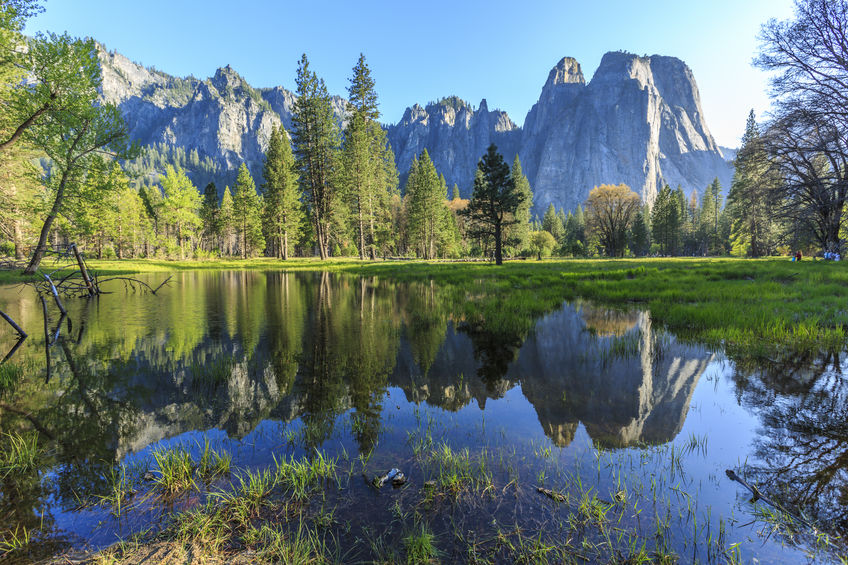National parks are about more than a place to vacation. They preserve our national heritage and are places for teaching and learning about history, geography and nature. The park system from its very beginning included the purpose of preserving the natural environment and protecting biodiversity.
The National Park System is not only a national treasure and American success story for nearly 150 years, its success comes from government and private sector endeavors to preserve and sustain the system over time. That legacy was reaffirmed in 2020. Last summer, the federal government committed to a multi-year, multi-billion dollar investment to undertake much need repair of the parks infrastructure, which was the largest investment in more than six decades.
When one thinks of national parks, famous places like Yellowstone, Yosemite, and the Grand Canyon come to mind. These locations may be the top three sites to visit, but there is so much more. Part of the national park system includes the scores of national historic sites, battlefields, monuments, and natural preserves. Prominent examples are Independence Hall in Philadelphia, the Statute of Liberty in New York Harbor, Gettysburg National Military Park in south-central Pennsylvania, and the Everglades in south Florida.
The national park system dates back to 1872 with the enactment of the Yellowstone National Park Act, which designated two million acres in northwest Wyoming and parts of Montana as a public park under the management of the U.S. Department of the Interior. As such, this land was off-limits to settlement, mining and logging.
The Antiquities Act in 1906 gave the President of the United States the power to preserve historic landmarks and structures, and lands of historic and environmental interest and importance. By 1916, the National Park Service was created to manage the growing number of designated parks and monuments. Subsequent legislation expanded the Park Service jurisdiction to preserve historic places, lakeshores, scenic trails and rivers, and more.
The present-day national park system includes 422 areas covering 85 million acres across the fifty states plus American territories, which are listed here.
The National Park Service has an annual budget of more than $3 billion and employs 20,000 workers. Nearly 300,000 Americans annually volunteer for the agency mission. In 2019, there were 327 million visitors to a site managed by the Park Service – a number about equal to the U.S. population (this number, of course, counts the multiple sites by the same person, and tourists from overseas).
Though the Park System’s budget has been steadily growing, it has not kept up with the vast maintenance and capital needs of so many properties. The Pew Charitable Trust, working with hundreds of local organizations, compiled a list of repair needs throughout the system with an estimated cost more than $13 billion. For example, Glacier National Park in Montana was estimated to need $100 million of work, mostly involving road repairs.
The largest category of upkeep, in fact, is roadways, as the Park System has more than 5,500 miles with an estimated need of $5 billion. Buildings, bridges, marinas, parking areas, wastewater systems and many other needs add the to the Pew’s total estimate.
Protecting and upgrading the park system are objectives shared by a variety of groups, including local businesses dependent on tourism, chambers of commerce, conservation and environmental organizations, veterans groups, Indian tribes and, of course, contractors and firms willing and able to undertake repair and restoration.
Deteriorating roads, battlefields and structures led Congress and the Trump administration last summer to pass the Great American Outdoors Act which provides nearly $10 billion in funding over the next five years for park repairs and forest management.
This funding, ironically, comes not from the taxpayer, but from the oil companies. Nearly $2 billion in annual royalties from offshore oil and gas drilling are now earmarked to repair our national parks, historic sites, natural preserves and forests. This also constitutes the largest investment in the park system since 1956 when Congress authorized $1 billion over the following decade.
If you have not been to a national park in the United States, you are missing out. If you haven’t explored any lately, make plans. When the Covid-19 pandemic finally dissipates, hopefully with the new vaccines coming soon, it is well worth visiting several sites in 2021. If you have teenage children, invest in a family vacation; the memories will last a lifetime.
